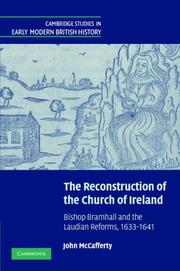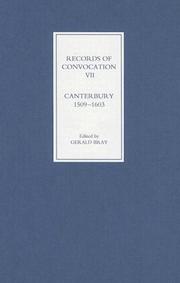| Listing 1 - 10 of 19 | << page >> |
Sort by
|
Book
Year: 1955 Publisher: New York : Noonday Press,
Abstract | Keywords | Export | Availability | Bookmark
 Loading...
Loading...Choose an application
- Reference Manager
- EndNote
- RefWorks (Direct export to RefWorks)
Authors, Irish --- Satire --- Biography. --- Authorship. --- Swift, Jonathan, --- Church of Ireland --- Clergy
Book
ISBN: 9781848930100 Year: 2011 Publisher: London : Pickering and Chatto,
Abstract | Keywords | Export | Availability | Bookmark
 Loading...
Loading...Choose an application
- Reference Manager
- EndNote
- RefWorks (Direct export to RefWorks)
William King (1650-1729) was perhaps the dominant Irish intellect of the period from 1688 until his death in 1729. An Anglican (Church of Ireland) by conversion, King was a strident critic of John Toland and the clerical superior of Jonathan Swift.
Statesmen --- Church and state --- History --- King, William, --- Church of Ireland --- Bishops

ISBN: 9780521643184 9780511495908 9780521181464 9780511350115 0511350112 0521181461 1107173116 1281086185 9786611086183 0511348282 1139130048 0511351011 0511495900 0511349254 052164318X Year: 2007 Publisher: Cambridge, UK ; New York : Cambridge University Press,
Abstract | Keywords | Export | Availability | Bookmark
 Loading...
Loading...Choose an application
- Reference Manager
- EndNote
- RefWorks (Direct export to RefWorks)
Thomas Wentworth landed in Ireland in 1633 - almost 100 years after Henry VIII had begun his break with Rome. The majority of the people were still Catholic. William Laud had just been elevated to Canterbury. A Yorkshire cleric, John Bramhall, followed the new viceroy and became, in less than one year, Bishop of Derry. This 2007 study, which is centred on Bramhall, examines how these three men embarked on a policy for the established Church which represented not only a break with a century of reforming tradition but which also sought to make the tiny Irish Church a model for the other Stuart kingdoms. Dr McCafferty shows how accompanying canonical changes were explicitly implemented for notice and eventual adoption in England and Scotland. However within eight years the experiment was blown apart and reconstruction denounced as subversive. Wentworth, Laud and Bramhall faced consequent disgrace, trial, death or exile.
Church of Ireland --- Eaglais na hÉireann --- United Church of England and Ireland --- History --- Arts and Humanities
Book
ISBN: 1139083759 1108034497 Year: 1882 Publisher: Place of publication not identified : Cambridge : publisher not identified, Cambridge University Press
Abstract | Keywords | Export | Availability | Bookmark
 Loading...
Loading...Choose an application
- Reference Manager
- EndNote
- RefWorks (Direct export to RefWorks)
Sir Leslie Stephen (1832-1904) came from a distinguished family of politicians, jurists and writers, and was the father of Vanessa Bell and Virginia Woolf. His literary career began with writing about his great passion, the Alps, and he became a noted author and critic, and the first editor of the Dictionary of National Biography. He was a friend of John Morley (1838-1923), the general editor of English Men of Letters, who commissioned him to write three biographies for the first series, on Swift, Pope and Johnson. Stephen is very interested in the family connections and history of Jonathan Swift (1667-1745), the great satirist and moralist, and he blends direct sources with general conclusions in an informal style which makes the work (first published in 1882) of continuing interest today. Stephen's Sketches from Cambridge, published anonymously in 1865, is also reissued in the Cambridge Library Collection.
Church Of Ireland --- Swift, Jonathan, 1667-1745 --- Satire, English --- Authors, Irish --- Authors --- Religion --- Literary Criticism --- Biography & Autobiography
Book
Year: 1955 Publisher: London : Oxford university press,
Abstract | Keywords | Export | Availability | Bookmark
 Loading...
Loading...Choose an application
- Reference Manager
- EndNote
- RefWorks (Direct export to RefWorks)
Satire, English --- Authors, Irish --- History and criticism --- Biography --- Swift, Jonathan, --- Church of Ireland --- Clergy --- Biography. --- Ireland --- Intellectual life
Book
Year: 1967 Publisher: London : New York : Macmillan; St. Martin's Press,
Abstract | Keywords | Export | Availability | Bookmark
 Loading...
Loading...Choose an application
- Reference Manager
- EndNote
- RefWorks (Direct export to RefWorks)
Satire, English --- Authors, Irish --- Liberty in literature. --- History and criticism. --- Biography. --- Swift, Jonathan, --- Church of Ireland --- Clergy

ISBN: 1805431811 1843832232 Year: 2006 Publisher: Woodbridge : The Boydell Press,
Abstract | Keywords | Export | Availability | Bookmark
 Loading...
Loading...Choose an application
- Reference Manager
- EndNote
- RefWorks (Direct export to RefWorks)
The convocation records of the Churches of England and Ireland are the principal source of our information about the administration of those churches from middle ages until modern times. They contain the minutes of clergy synods, the legislation passed by them, tax assessments imposed by the king on the clergy, and accounts of the great debates about religious reformation; they also include records of heresy trials in the fifteenth and sixteenth centuries, many of them connected with the spread of Lollardy. However, they have never before been edited or published in full, and their publication as a complete set of documents provides a valuable resource for scholarship.
This volume reconstructs the history of the convocation in the early years of Henry VIII and reproduces the abstracts made of the records from 1529 onwards, which were burnt in the great fire of London in 1666. Of particular interest are the notes of Peter Heylyn, which were only rediscovered in 1999, and have never been printed before. Also included are the canons and articles of religion passed by convocation in the sixteenth century.
Councils and synods --- History --- Church of England. --- Church of Ireland --- Great Britain --- Ireland --- Church history --- Canterbury (England)
Book
ISBN: 1805431862 1843832437 Year: 2006 Publisher: Woodbridge : The Boydell Press,
Abstract | Keywords | Export | Availability | Bookmark
 Loading...
Loading...Choose an application
- Reference Manager
- EndNote
- RefWorks (Direct export to RefWorks)
The convocation records of the Churches of England and Ireland are the principal source of our information about the administration of those churches from middle ages until modern times. They contain the minutes of clergy synods, the legislation passed by them, tax assessments imposed by the king on the clergy, and accounts of the great debates about religious reformation; they also include records of heresy trials in the fifteenth and sixteenth centuries, many of them connected with the spread of Lollardy. However, they have never before been edited or published in full, and their publication as a complete set of documents provides a valuable resource for scholarship.
This volume contains a composite index of source material, references to the Bible, canon law, parliamentary statutes et cetera, and of the subjects discussed and on which legislation has been enacted over the centuries. There is also a complete concordance to David Wilkins' 'Concilia Magnae Britanniae et Hiberniae', much of which has now been replaced by this collection of records.
Councils and synods. --- Councils and synods --- History --- Church of England. --- Church of Ireland --- Great Britain --- Ireland --- Church history
Book
Year: 1954 Publisher: Oxford : Clarendon Press,
Abstract | Keywords | Export | Availability | Bookmark
 Loading...
Loading...Choose an application
- Reference Manager
- EndNote
- RefWorks (Direct export to RefWorks)
Authors, Irish --- Christian literature, English --- Christianity and literature --- Satire --- Satire, English --- Biography. --- History and criticism. --- History --- Religious aspects. --- Swift, Jonathan, --- Religion. --- Church of Ireland --- Clergy --- History.
Book
ISBN: 9780521770385 9780511575846 9780521369947 0521770386 9780511508301 0511508301 051157584X 1107194679 051150764X 1282058428 9786612058424 051150456X 0511508964 0511506708 0521369940 9781107194670 9781282058422 6612058420 9780511508967 9780511506703 Year: 2009 Volume: *80 Publisher: Cambridge, UK ; New York : Cambridge University Press,
Abstract | Keywords | Export | Availability | Bookmark
 Loading...
Loading...Choose an application
- Reference Manager
- EndNote
- RefWorks (Direct export to RefWorks)
This book explores the enforcement of the English Reformation in the heartland of English Ireland during the sixteenth century. Focusing on the diocese of Dublin - the central ecclesiastical unit of the Pale - James Murray explains why the various initiatives undertaken by the reforming archbishops of Dublin, and several of the Tudor viceroys, to secure the allegiance of the indigenous community to the established Church ultimately failed. Led by its clergy, the Pale's loyal colonial community ultimately rejected the Reformation and Protestantism because it perceived them to be irreconcilable with its own traditional English culture and medieval Catholic identity. Dr Murray identifies the Marian period, and the opening decade of Elizabeth I's reign, as the crucial times during which this attachment to survivalist Catholicism solidified, and became a sufficiently powerful ideological force to stand against the theological and liturgical innovations advanced by the Protestant reformers.
Reformation --- -Reformation --- -27 <415> --- 283*1 --- Protestant Reformation --- Church history --- Counter-Reformation --- Protestantism --- Kerkgeschiedenis--Ierland--(als geheel) --- Anglicanisme:--16de eeuw --- History --- Church of Ireland. --- Dublin (Diocese, Anglican) --- Dublin (Ireland : Diocese : Church of Ireland) --- -Ireland --- Irish Free State --- Ireland --- 283*1 Anglicanisme:--16de eeuw --- 27 <415> --- English Reformation --- Arts and Humanities
| Listing 1 - 10 of 19 | << page >> |
Sort by
|

 Search
Search Feedback
Feedback About UniCat
About UniCat  Help
Help News
News